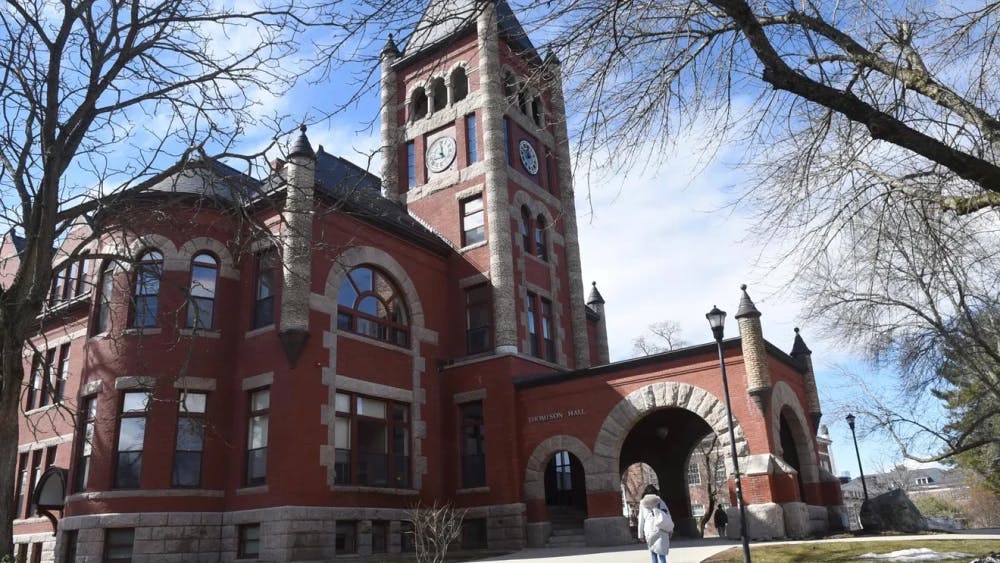
From March 30 to April 3, the UNH Dance Company held its annual concert, an elaborate performance that had people young and old filling the seats of the Paul Creative Arts Center (PCAC) every night of the week. The night was split into two performances; a jazz, tap, aerial (JTA Company) performance entitled “Magic” and a one-act ballet “Les Esclaves” inspired by famous ballet “Le Corsaire” performed by the Ballet Company.
Professor of Theater and Dance Gay Nardone, who has been dancing since the age of 3 and dancing professionally since the age of 17, directed “Magic.” Nardone has been directing and choreographing performances at UNH since 1982.
“The kids have been great here… I have seen absolutely no difference in spirit in who they are, they are very different from other places… we have very strong dancers,” Nardone said.
“Magic” was performed by 26 dancers accompanied by a playlist of intense drums and vocals.
Nardone said her inspiration came from her own life experience.
“I’m getting old… it started just about age… playing around with seasons and time, and as time ticks by you get older,” she said.
“It’s a wonderful dance family,” said lecturer in theatre and dance Mary Beth Marino, who co-choreographed “Magic” along with Nardone. Marino is an alumna of UNH and former student of Nardone. “I never left,” she said. In Nardone’s notes within the brochure she says, “Sarah (Rachel White) remembers and relives the seasons of her life. Under the magical spell of the timekeeper (Driss Dallahi) and his three Enchantresses, she experiences the joys and losses of passing time.”
“Magic” was separated into four scenes and one closing scene. The performance incorporated aerial dance, a style where fabric, triple trap and lyra are hung from the rafters where the dancers twist and contort their bodies up and down using their own strength for minutes on end.
Driss Dallahi, a student at UNH, dancer of nine years and one of the central performers in the show said, “before this show, I have never done aerial stuff on stage… I feel really relieved; It’s just really a lot of stress, worrying about if everything is going to go right. Then, afterwards it’s a sigh of relief.”
Just as much effort and time goes into the ballet.
“It’s a really lengthy process,” said Susan Endrizzi, the choreographer of “Les Esclaves”and theater and dance, with nearly 200 hours of practice prior to a week of performances.
The ballet, “Les Esclaves” was set in the Middle East and incorporated human trafficking, an issue of the past and present. Assaf Benchetrit, the director of “Les Esclaves” and assistant professor of theatre and dance wanted to incorporate these two ideas.
The story was presented in one act, set in a dark kingdom ruled by the wicked King Sultan who runs the trafficking of the women.
The ballet unfolds as slave traffickers from distant kingdoms have the intent to purchase new slaves.
One after another the frightened women are made to dance.When the King Sultan divides the women in half for the two slave traders, that is when the lone Mama Slave (Julia Fraser) takes action.
In her own interpretation, Fraser said, “I’m kinda the slave who has already been used, I’m the older slave who has seen so much and been through so much.”
Fraser was accompanied by Luke Thompson, (The Slave), whose character played the savior in the performance and frees the captive women heroically.
“I have been training since September for this performance… but only started doing ballet since I was eighteen,” Thompson said.
“The inspiration comes from ‘Le Corsaire,’ which is a story about slavery, but around the idea of a love story and slavery is enough, it is such a big issue,” Benchetrit said.
For Benchetrit’s next show, he said he has ideas.
“Cinderella… but taking our own concepts and playing around with it,” he said.













